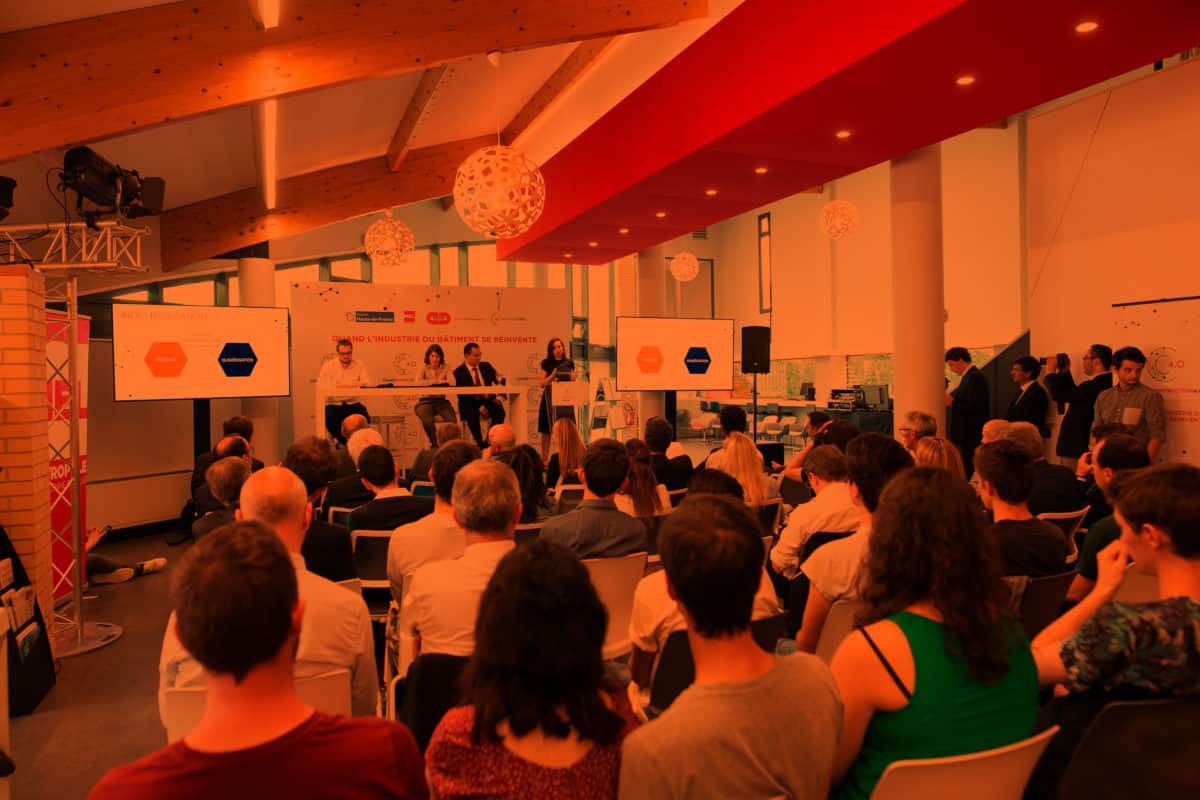
3 questions to Emna Attouri, PhD student at Chaire Construction 4.0
5 minutes of reading
Cast in situ, precast twin walls, precast slabs, modular construction, 3D printing… how do you choose? This, in essence, is the research project being carried out by Emna Attouri, a PhD student participating in the Chaire Construction 4.0 research

In January 2017, Bouygues Construction and the graduate engineering school Ecole Centrale de Lille created the Construction 4.0 chair programme with the aim of supporting the digitisation and industrialisation of the construction sector, currently one of the least developed sectors. Before you give tell us about your project, could you outline in just a few words what this chair programme involves?
There have been three major industrial revolutions in the past: steam power, mass production, and then electronics and automation. In recent years, we have entered the fourth industrial revolution: connected technologies and the link between physical and virtual. Construction, as an industry in its own right, is among the least developed industries but does provide a tremendous playing field for research. The goal of the chair programme is to adapt the principles of Industry 4.0 to our specific sector in order to boost productivity levels, and to make gains in safety and quality along the way. There is a wide and varied range of topics: from prefabrication, to predictive maintenance, the connected construction site, robotisation, logistics and 3D printing through to automated design, there is no shortage of subject areas. The five-year research partnership is supported by the Hauts-de-France region and the city of Lille. Comprised of a lead professor, Zoubeir Lafhaj, together with research engineers and PhD students, the research chair is also supported by a scientific committee of well-renowned experts and other academic partners such as the universities of Berkeley and Stanford.
You began your thesis in June 2017, under the title “Industrialisation and Robotisation in construction: towards structural works 4.0”, aiming to provide objective and transparent guidance to site workers in order to choose the best construction method. Can you tell us more about it?
The aim of this project is to create a tool that will allow comparisons between a wealth of different options in order to assist the skilled worker in choosing the best construction method for a particular project, in a transparent and objective way.
It is a multi-criteria and multi-party decision-making tool. The criteria will include, for example, the site conditions, regulations, optimised performance for cost, quality, safety, availability of labour, environmental factors such as waste reduction, building insulation, logistical factors, the level of repetition or the use of digital tools such as virtual reality. Several stakeholders are also involved in the decision process: the architect, design offices, the client, etc. According to the nature of the project and whether it is a standard RFQ process or a design-build contract, for example, the recommendations will vary greatly.
The tool has been specifically developed for a construction company, with several possible levels of recommendations, from the early stages of a project through to the highly operational construction site stage. For the time being, it is dedicated to the structural works phase for housing construction primarily.
What stages have now been covered, and what remains to be done?
The first year of my thesis was dedicated to reviewing the state of the art and to diagnosing issues on a number of Bouygues Construction sites. In addition, thanks to the chair programme, we have an international network of experts, which allows us to establish a complete benchmark of prefabrication companies.
We have also run a number of data collection programmes, involving observations, questionnaires and semi-structured interviews with employees. Development is ongoing and the tool will be ready for testing in June.
Decision-making methods have already been tested in employee workshops. Over the course of a few weeks, I am also going to be working with several construction sites in order to set up prefabrication solutions and then evaluate their performance. This type of fieldwork and direct contact with employees give us a really good insight into requirements and reality – it provides a great opportunity for applied research.
The tool will be trialled on existing construction sites and the feedback from these sites will be important for its ongoing improvement. Each stage of the research project is carried out in joint partnership with the employees. The human aspect is the central focus of our tool and the final decision will always be taken by the user, with the tool providing a multi-criteria overview. It will also allow us to capitalise on past experience and on the performance of the solutions tested.
More reading
Read also




What lies ahead? 7 megatrends and their influence on construction, real estate and urban development
Article
20 minutes of reading

